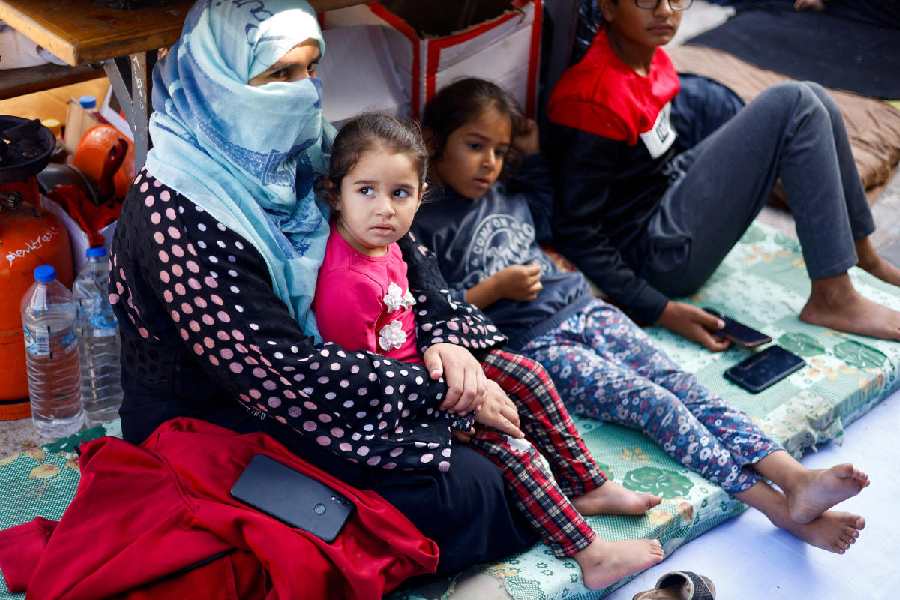Gaza’s children are showing ever more signs of trauma two weeks into Israel’s intense bombardment, parents and psychiatrists in the tiny, crowded enclave say, with no safe place to hide from the falling bombs and little prospect of respite.
Children make up about half of Gaza’s 2.3 million population, living under near constant bombardment with many packed into temporary shelters in UN-run schools after fleeing their homes with little food or clean water.
Israel is expected to launch a ground attack on Gaza shortly in response to a cross-border assault by Hamas fighters on southern Israel on October 7 that killed more than 1,400 people, with a further 210 taken hostage.
“Children ... have started to develop serious trauma symptoms such as convulsions, bed-wetting, fear, aggressive behaviour, nervousness, and not leaving their parents’ sides,” said Gaza psychiatrist Fadel Abu Heen.
Over 4,100 Palestinians have been killed in Gaza so far, including more than 1,500 children, according to the Palestinian health ministry.
Conditions in makeshift shelters in United Nations schools, where more than 380,000 people are camped out in hope of escaping the bombardment, only compound the problem. There are sometimes 100 people sleeping in each classroom, which all require continuous cleaning. There is little electricity and water so bathrooms and toilets are very dirty.
“Our children suffer a lot at night. They cry all night, they pee themselves without meaning to and I don’t have time to clean up after them, one after the other,” said Tahreer Tabash, a mother of six children sheltering in a school.
Even there, they are not safe. Such schools have been hit several times, the United Nations has said, and Tabash has seen strikes hitting nearby buildings. When her children hear so much as a chair being moved, they jump in fear, she said. “That lack of any safe place has created a general sense of fear and horror among the entire population and children are most impacted,” said Abu Heen.
“Some of them reacted directly and expressed their fears. Although they may need immediate intervention, they may be in a better state than the other kids who kept the horror and trauma inside them,” he said.
One house in Khan Younis, in the south of the enclave, is sheltering about 90 people including 30 under the age of 18, where they have to sleep in shifts for lack of space. “When there’s an explosion or any target getting hit nearby they are always screaming, always frightened,” said Ibrahim al-Agha, an engineer sheltering in the house.
Except for the headline, this story has not been edited by The Telegraph Online staff and has been published from a syndicated feed.










